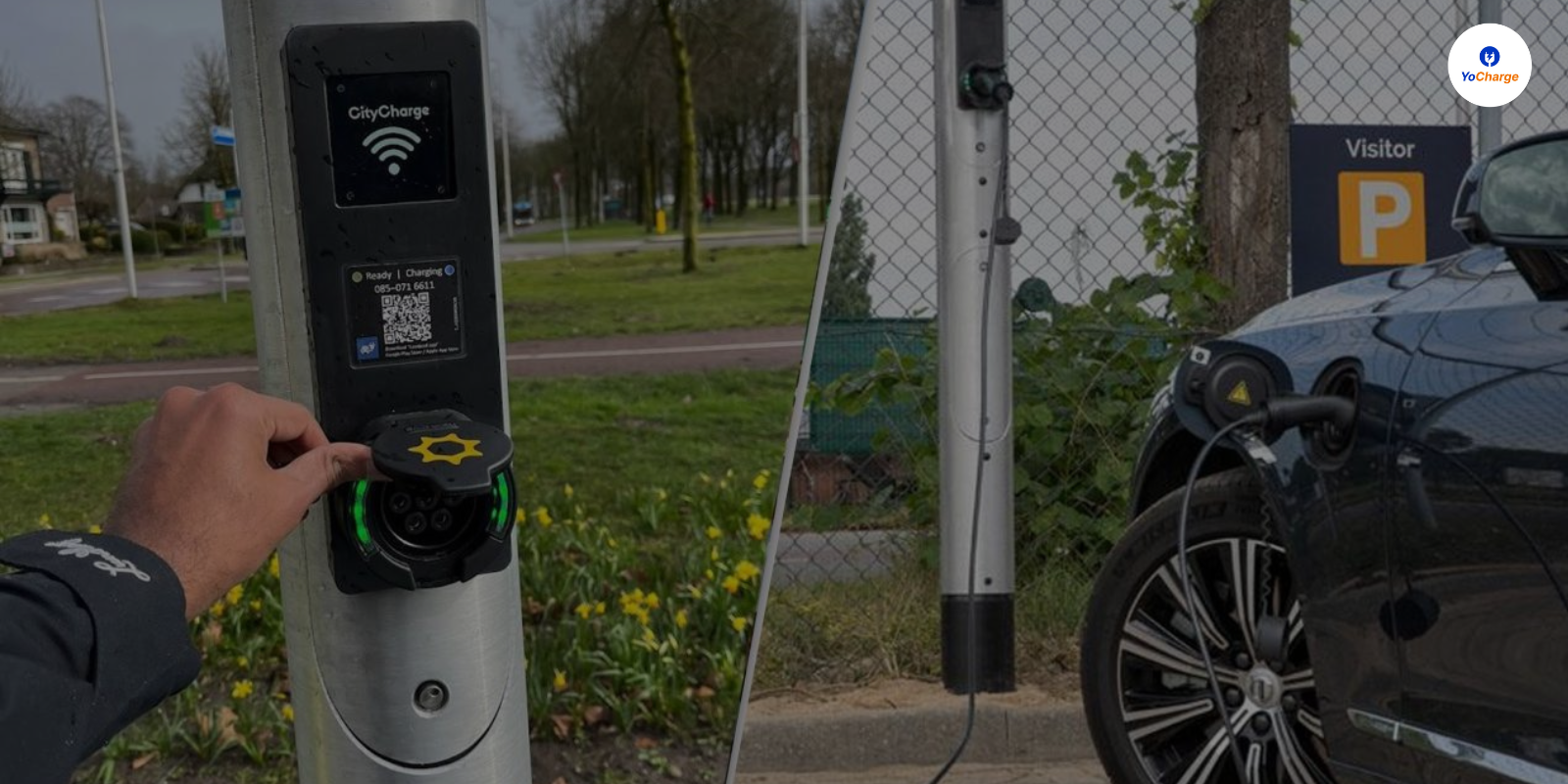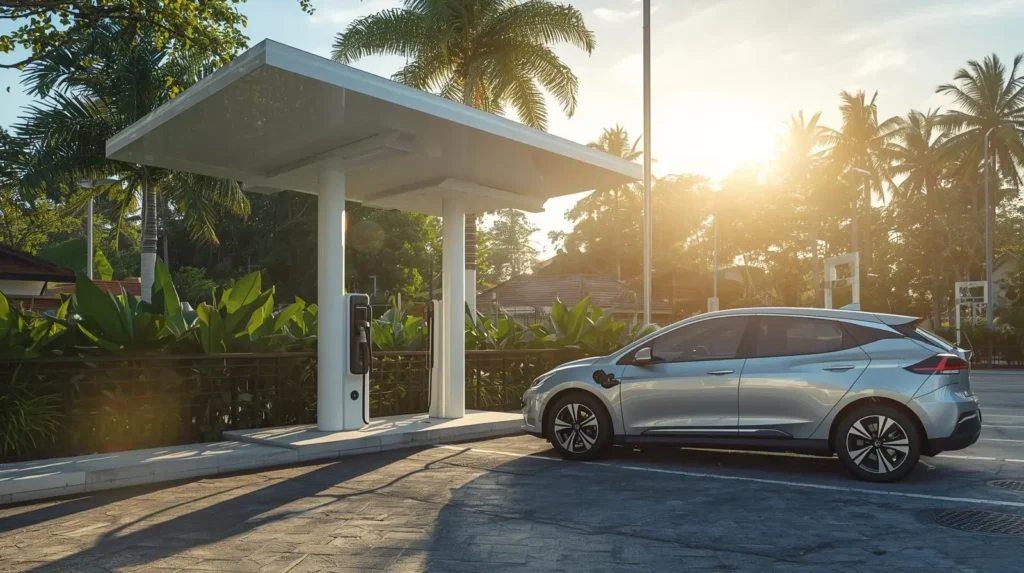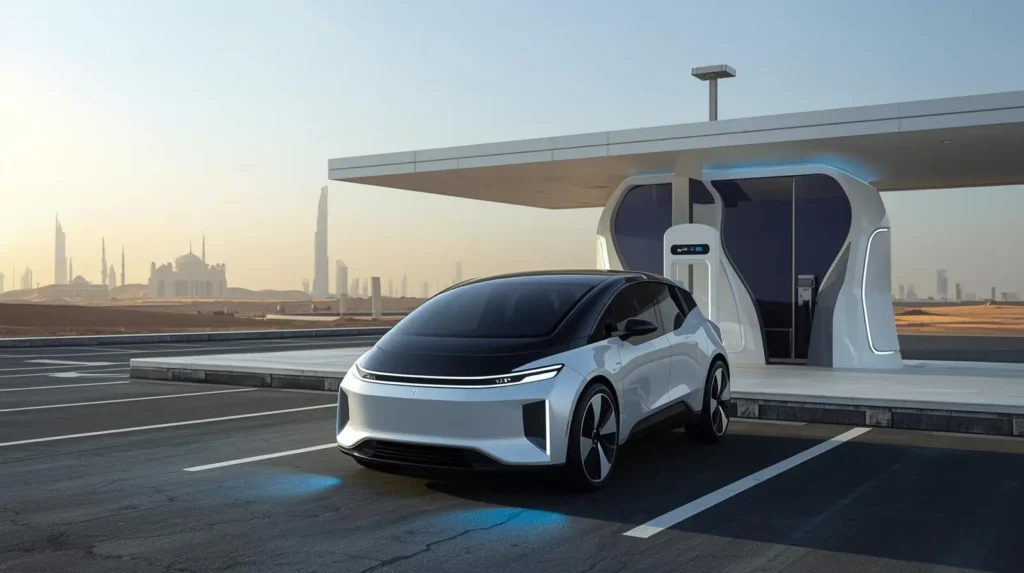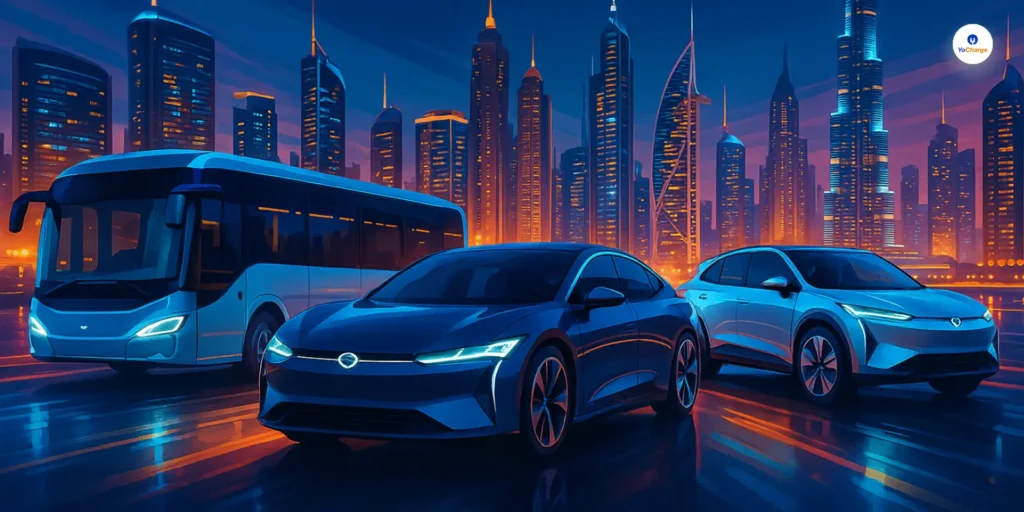
Streetlight EV Charging: Imagine parking your car on a city street and casually plugging it into a nearby streetlight to charge. Sounds futuristic, right? Well, the future is already here. Streetlight EV charging is emerging as a game-changing solution for electric vehicle owners, especially in urban areas where access to private charging stations is limited.
With the world moving toward greener transportation, this innovative approach is not just convenient but also crucial in expanding charging infrastructure. The question is: Could streetlight EV charging be the key to accelerating the electric vehicle revolution? Let’s find out.
What Is Streetlight EV Charging?
Streetlight EV charging is the process of retrofitting existing streetlights with charging points for electric vehicles. This innovative idea transforms everyday infrastructure into accessible EV chargers, allowing EV owners to charge their cars while parked on the street.
With minimal upgrades, cities can use their existing electrical grid to power these stations. This offers a simple, low-cost solution, particularly in densely populated areas where installing dedicated charging stations may be expensive or impractical.
How Does Streetlight EV Charging Work?
The process of converting streetlights into charging stations is relatively simple. Here is how it works:
- Retrofit the Streetlight: The streetlight is fitted with a charging port. This port is usually compatible with most EVs, allowing users to plug in easily.
- Upgraded Power Supply: The streetlight’s fuse is upgraded to handle the increased electrical load needed for charging EVs.
- User Interaction: EV drivers carry their charging cable, plug it into the streetlight, and start charging. In some cities, this can be done via a smartphone app.
- Billing System: Many systems use a pay-per-kilowatt-hour model, meaning drivers pay based on the electricity used.
Why Is Streetlight EV Charging So Promising?
As electric vehicles become more common, finding reliable and accessible charging options is essential. Streetlight EV charging has emerged as an innovative solution, making use of existing infrastructure. But what exactly makes this approach stand out? Below are some of the key reasons why streetlight charging holds such promise for the future of urban mobility.
Increased Accessibility
Not everyone has a garage or driveway to install a private charger. In cities with dense populations, such as London or New York, many people park their cars on the street. Streetlight charging provides an accessible solution for those living in apartments or condos. It brings charging stations closer to where people live, solving one of the biggest barriers to EV adoption—the lack of charging infrastructure.
Cost-Effective
Installing traditional charging stations involves high costs, including construction, permits, and grid upgrades. However, using streetlights cuts these expenses by leveraging existing infrastructure. Cities can save time and money by upgrading streetlights instead of building new charging points from scratch.
Environmental Benefits
EVs already help reduce carbon emissions, but the infrastructure needed to support them should also be eco-friendly. Streetlight charging supports sustainability goals by using existing infrastructure and integrating renewable energy sources. For example, some cities like Los Angeles connect streetlight chargers to renewable energy grids, making the whole process greener.
Reduces Range Anxiety
One of the biggest fears for potential EV owners is range anxiety—the worry about running out of battery with no charger nearby. By installing streetlight chargers in neighborhoods and public areas, cities can ease this fear, making EVs a more attractive option for the general population.
Streetlight EV Charging Case Studies: Cities Leading the Charge

Several cities have already piloted streetlight EV charging programs. These early adopters provide valuable insights into the feasibility and future potential of this concept.
Case Study 1: London
In 2016, London started a pilot program in Kensington and Chelsea to convert streetlights into EV chargers. The process involved minimal infrastructure changes, and now, 94% of residents in those areas are within 300 feet of a charger. London’s success has led to the installation of 8,000 streetlight chargers across the UK, making it one of the leaders in EV infrastructure.
Case Study 2: Los Angeles
In 2019, Los Angeles launched its streetlight charging program. The city upgraded 130 streetlights with EV chargers and plans to install 150 more each year. This effort is part of LA’s broader sustainability goals, as it is one of the cities with the highest EV ownership rates in the U.S.
Case Study 3: Berlin
Berlin is also embracing streetlight charging as part of its Smart City initiative. The city has installed 200 streetlight chargers, with plans for 800 more in the coming years. This move makes charging more accessible in a city where many residents live in apartments without private parking.
Case Study 4: Beam Global
A patented system from Beam Global that replaces traditional streetlights with solar- and wind-powered charging stations. BeamSpot poles are designed to be installed using existing foundations and grid connections, and they don’t require new utility grid circuits. The poles also include a 15 kWh battery to store energy generated by the solar array and wind turbine.
Benefits of Streetlight EV Charging
There are several benefits of streetlight EV charging including:
- Accessibility for Urban Dwellers: Many urban residents rely on street parking, making it difficult to install private chargers. Streetlight charging provides an option for these individuals, ensuring everyone has access to charging facilities.
- Cost Savings for Cities: Installing new chargers can be expensive. Retrofitting streetlights reduces installation costs, making it easier for cities to expand their charging infrastructure. This cost-effectiveness accelerates the adoption of EVs.
- Supports Green Energy Goals: Streetlight charging can integrate renewable energy, further reducing carbon footprints. This method aligns with cities’ sustainability efforts to improve air quality and promote green energy solutions.
- Convenient Charging Solution: Streetlight chargers can be placed in residential neighborhoods, commercial districts, and workplaces. This convenience encourages more people to consider EVs as a practical transportation option.
Challenges of Streetlight EV Charging
While promising, streetlight EV charging also has challenges that need to be addressed:
- Technical Limitations: Not all streetlights are equipped to handle the increased electrical load required for charging EVs. Cities must invest in upgrading electrical systems to ensure reliability and safety.
- Safety Concerns: Installing chargers in public spaces brings some safety concerns, such as ensuring pedestrians and vehicles are not obstructed. Additionally, cities need to develop proper regulatory frameworks to manage these stations.
- Power Grid Strain: As more EVs hit the roads, there is a risk of overloading the power grid. Cities will need to invest in smart grid management and energy storage solutions to maintain stability.
Future Prospects of Streetlight EV Charging
The future of streetlight EV charging looks bright, with various advancements and trends paving the way for its widespread adoption. As cities around the world continue to focus on sustainable transportation, streetlight charging could become a central component of EV infrastructure. Let’s explore what the future might hold for this promising technology.
Rapid Expansion
As cities continue to adopt EV-friendly policies, streetlight charging is likely to see rapid growth. The NREL’s National Plug-In Electric Vehicle Infrastructure Analysis estimates that 27,500 fast chargers and 600,000 Level 2 chargers will be needed by 2030 in the USA. Streetlight chargers could play a crucial role in meeting this demand.
Technological Advancements
As technology improves, we can expect streetlight chargers to become faster and more efficient. For example, wireless charging or faster charging technologies could be integrated into streetlights, making the process even more seamless.
Smart City Integration
Streetlight charging fits well within the broader framework of Smart City initiatives. Cities are looking to leverage data and AI to optimize infrastructure, and streetlight EV chargers could be an integral part of that future.
Conclusion: Is Streetlight EV Charging the Future?
Streetlight EV charging has the potential to revolutionize urban mobility. It provides an accessible, cost-effective, and environmentally friendly solution to the growing need for EV infrastructure. While challenges remain, the benefits far outweigh the obstacles.
As cities continue to innovate, streetlight EV charging could very well be a cornerstone in the future of electric vehicle adoption. By making charging more accessible and convenient, this technology could help drive the transition to cleaner, greener transportation for everyone.
Ready to power up your EV charging network? Whether you’re a city planner or a business looking to offer seamless EV charging, YoCharge’s white-label EV charging software provides everything you need. Partner with YoCharge today and drive the future of EV charging!
Also Read: Wireless EV Charging: Everything You Need to Learn



